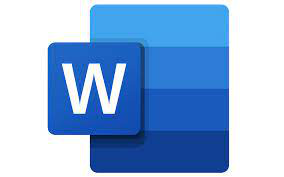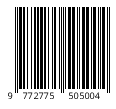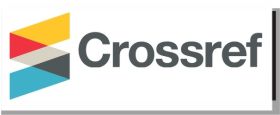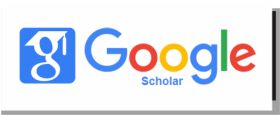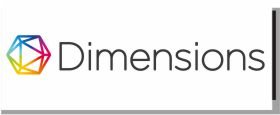- Focus and Scope
- Section Policies
- Peer Review Process
- Open Access Policy
- Publication Ethics and Malpractice Statement
- Copyright
- Policy of Screening for Plagiarism
- Author Fees
Focus and Scope
Jurnal Ilmu Administrasi Publik merupakan jurnal akademik yang diterbitkan setiap dua bulan sekali sebagai wadah bagi mahasiswa, akademisi, peneliti, dan praktisi untuk mendiseminasikan hasil penelitian dan kajian ilmiah di bidang administrasi publik. Jurnal ini mengakomodasi berbagai topik yang berkaitan dengan administrasi publik, kebijakan publik, tata kelola pemerintahan, perpajakan, serta isu-isu kontemporer dalam sektor publik.
Fokus Jurnal
Jurnal ini berfokus pada pengembangan teori, konsep, dan praktik dalam administrasi publik yang relevan dengan dinamika pemerintahan, kebijakan publik, pelayanan publik, serta sistem perpajakan di tingkat lokal, nasional, maupun global.
Ruang Lingkup Jurnal
Jurnal Ilmu Administrasi Publik mencakup berbagai topik penelitian dan kajian ilmiah, antara lain:
1. Administrasi Publik
- Reformasi birokrasi dan tata kelola pemerintahan
- Inovasi dalam administrasi publik
- E-Government dan transformasi digital dalam sektor publik
- Manajemen organisasi publik
- Kepemimpinan dalam sektor publik
2. Kebijakan Publik
- Formulasi, implementasi, dan evaluasi kebijakan publik
- Kebijakan sosial, ekonomi, dan lingkungan
- Analisis kebijakan berbasis bukti
- Partisipasi publik dalam pembuatan kebijakan
- Regulasi dan deregulasi dalam kebijakan publik
3. Pelayanan Publik
- Model dan strategi peningkatan kualitas layanan publik
- Inovasi dalam pelayanan publik
- Responsivitas dan akuntabilitas sektor publik
- Pelayanan publik berbasis teknologi informasi
- Kepuasan masyarakat terhadap pelayanan publik
4. Keuangan dan Anggaran Publik
- Pengelolaan keuangan daerah dan negara
- Akuntabilitas dan transparansi keuangan publik
- Efektivitas kebijakan fiskal dalam pembangunan
- Pendanaan dan investasi dalam sektor publik
5. Desentralisasi dan Otonomi Daerah
- Tata kelola pemerintahan daerah
- Sinergi antara pemerintah pusat dan daerah
- Pembangunan daerah berbasis partisipasi masyarakat
- Inovasi kebijakan daerah dalam pelayanan publik
6. Isu Kontemporer dalam Administrasi Publik
- Good governance dan anti-korupsi
- Administrasi publik dalam menghadapi krisis dan bencana
- Digitalisasi sektor publik dan kebijakan smart city
- Peran sektor swasta dan masyarakat dalam pembangunan publik
7. Perpajakan dalam Administrasi Publik
- Kebijakan perpajakan dan dampaknya terhadap perekonomian
- Administrasi perpajakan dan efisiensi sistem perpajakan
- Digitalisasi dan modernisasi sistem perpajakan (e-filing, e-billing, e-invoice)
- Tax compliance dan strategi peningkatan kepatuhan pajak
- Pengelolaan penerimaan pajak daerah dan nasional
- Pajak sebagai instrumen kebijakan fiskal
- Tax justice dan dampaknya terhadap pembangunan ekonomi
Jurnal ini menerima artikel hasil penelitian, studi literatur, dan kajian konseptual yang memberikan kontribusi dalam pengembangan ilmu administrasi publik. Setiap naskah yang diterbitkan telah melalui proses peer-review untuk memastikan kualitas akademik dan orisinalitasnya.
Dengan terbit setiap dua bulan sekali, jurnal ini diharapkan dapat menjadi referensi akademik yang berkelanjutan bagi mahasiswa dalam memahami dinamika administrasi publik serta berkontribusi dalam pengembangan ilmu dan kebijakan publik, termasuk bidang perpajakan, di Indonesia.
Section Policies
Articles
Peer Review Process
The submitted manuscript is first reviewed by an editor. It will be evaluated in the office, whether it is suitable for Bijak focus and scope or has a major methodological flaw and similarity score by using iThenticate.
The manuscript will be sent to at least two anonymous reviewers (Double Blind Review). Reviewers' comments are then sent to the corresponding author for necessary actions and responses.
The suggested decision will be evaluated in an editorial board meeting. Afterward, the editor will send the final decision to the corresponding author.
All manuscripts are reviewed by double-blind reviewers consisting of an editor and members of the Editorial Board or qualified outside/external reviewers. This is done within the shortest given time. The journal, above all, strives to return reviewers’ comments to authors within 3 weeks. The Editorial Board re-review manuscripts that are accepted until they are revised.
Open Access Policy
Open Access Statement
- This journal provides immediate open access to its content on the principle that making research freely available to the public to supports a greater global exchange of knowledge. Benefits of open access for the author, include:
1. Free access for all users worldwide
2. Increased visibility and readership
3. Rapid publication
4. No spatial constraints
Read the Budapest Open Access Initiative
An old tradition and a new technology have converged to make possible an unprecedented public good. The old tradition is the willingness of scientists and scholars to publish the fruits of their research in scholarly journals without payment, for the sake of inquiry and knowledge. The new technology is the internet. The public good they make possible is the world-wide electronic distribution of the peer-reviewed journal literature and completely free and unrestricted access to it by all scientists, scholars, teachers, students, and other curious minds. Removing access barriers to this literature will accelerate research, enrich education, share the learning of the rich with the poor and the poor with the rich, make this literature as useful as it can be, and lay the foundation for uniting humanity in a common intellectual conversation and quest for knowledge.
For various reasons, this kind of free and unrestricted online availability, which we will call open access, has so far been limited to small portions of the journal literature. But even in these limited collections, many different initiatives have shown that open access is economically feasible, that it gives readers extraordinary power to find and make use of relevant literature, and that it gives authors and their works vast and measurable new visibility, readership, and impact. To secure these benefits for all, we call on all interested institutions and individuals to help open up access to the rest of this literature and remove the barriers, especially the price barriers, that stand in the way. The more who join the effort to advance this cause, the sooner we will all enjoy the benefits of open access.
The literature that should be freely accessible online is that which scholars give to the world without expectation of payment. Primarily, this category encompasses their peer-reviewed journal articles, but it also includes any unreviewed preprints that they might wish to put online for comment or to alert colleagues to important research findings. There are many degrees and kinds of wider and easier access to this literature. By "open access" to this literature, we mean its free availability on the public internet, permitting any users to read, download, copy, distribute, print, search, or link to the full texts of these articles, crawl them for indexing, pass them as data to software, or use them for any other lawful purpose, without financial, legal, or technical barriers other than those inseparable from gaining access to the internet itself. The only constraint on reproduction and distribution and the only role for copyright in this domain should be to give authors control over the integrity of their work and the right to be properly acknowledged and cited.
While the peer-reviewed journal literature should be accessible online without cost to readers, it is not costless to produce. However, experiments show that the overall costs of providing open access to this literature are far lower than the costs of traditional forms of dissemination. With such an opportunity to save money and expand the scope of dissemination at the same time, there is today a strong incentive for professional associations, universities, libraries, foundations, and others to embrace open access as a means of advancing their missions. Achieving open access will require new cost recovery models and financing mechanisms, but the significantly lower overall cost of dissemination is a reason to be confident that the goal is attainable and not merely preferable or utopian.
To achieve open access to scholarly journal literature, we recommend two complementary strategies.
I. Self-Archiving: First, scholars need the tools and assistance to deposit their refereed journal articles in open electronic archives, a practice commonly called, self-archiving. When these archives conform to standards created by the Open Archives Initiative, then search engines and other tools can treat the separate archives as one. Users then need not know which archives exist or where they are located in order to find and make use of their contents.
II. Open-access Journals: Second, scholars need the means to launch a new generation of journals committed to open access, and to help existing journals that elect to make the transition to open access. Because journal articles should be disseminated as widely as possible, these new journals will no longer invoke copyright to restrict access to and use of the material they publish. Instead they will use copyright and other tools to ensure permanent open access to all the articles they publish. Because price is a barrier to access, these new journals will not charge subscription or access fees, and will turn to other methods for covering their expenses. There are many alternative sources of funds for this purpose, including the foundations and governments that fund research, the universities and laboratories that employ researchers, endowments set up by discipline or institution, friends of the cause of open access, profits from the sale of add-ons to the basic texts, funds freed up by the demise or cancellation of journals charging traditional subscription or access fees, or even contributions from the researchers themselves. There is no need to favor one of these solutions over the others for all disciplines or nations, and no need to stop looking for other, creative alternatives.
Open access to peer-reviewed journal literature is the goal. Self-archiving (I.) and a new generation of open-access journals (II.) are the ways to attain this goal. They are not only direct and effective means to this end, but they are also within the reach of scholars themselves, immediately, and need not wait on changes brought about by markets or legislation. While we endorse the two strategies just outlined, we also encourage experimentation with further ways to make the transition from the present methods of dissemination to open access. Flexibility, experimentation, and adaptation to local circumstances are the best ways to assure that progress in diverse settings will be rapid, secure, and long-lived.
The Open Society Institute, the foundation network founded by philanthropist George Soros, is committed to providing initial help and funding to realize this goal. It will use its resources and influence to extend and promote institutional self-archiving, to launch new open-access journals, and to help an open-access journal system become economically self-sustaining. While the Open Society Institute's commitment and resources are substantial, this initiative is very much in need of other organizations to lend their effort and resources.
We invite governments, universities, libraries, journal editors, publishers, foundations, learned societies, professional associations, and individual scholars who share our vision to join us in the task of removing the barriers to open access and building a future in which research and education in every part of the world are that much more free to flourish.
February 14, 2002
Budapest, Hungary
Leslie Chan: Bioline International
Darius Cuplinskas: Director, Information Program, Open Society Institute
Michael Eisen: Public Library of Science
Fred Friend: Director of Scholarly Communication, University College London
Yana Genova: Next Page Foundation
Jean-Claude Guédon: University of Montreal
Melissa Hagemann: Program Officer, Information Program, Open Society Institute
Stevan Harnad: Professor of Cognitive Science, University of Southampton, Universite du Quebec a Montreal
Rick Johnson: Director, Scholarly Publishing and Academic Resources Coalition (SPARC)
Rima Kupryte: Open Society Institute
Manfredi La Manna: Electronic Society for Social Scientists
István Rév: Open Society Institute, Open Society Archives
Monika Seibert: eIFL Project consultant
Sidnei de Souza: Informatics Director at CRIA, Bioline International
Peter Suber: Professor of Philosophy, Earlham College & The Free Online Scholarship Newsletter
Jan Velterop: Publisher, BioMed Central
Publication Ethics and Malpractice Statement
Section A: Publication and authorship
- All submitted papers are subject to a strict peer-review process by at least two international reviewers that are experts in the area of the particular paper.
- The review process is a blind peer review.
- The factors that are taken into account in review are relevance, soundness, significance, originality, readability, and language.
- The possible decisions include acceptance, acceptance with revisions, or rejection.
- If authors are encouraged to revise and resubmit a submission, there is no guarantee that the revised submission will be accepted.
- Rejected articles will not be re-reviewed.
- The paper acceptance is constrained by such legal requirements as shall then be in force regarding libel, copyright infringement, and plagiarism.
- No research can be included in more than one publication.
Section B: Authors’ responsibilities
- Authors must certify that their manuscripts are their original work.
- Authors must certify that the manuscript has not previously been published elsewhere.
- Authors must certify that the manuscript is not currently being considered for publication elsewhere.
- The authors must participate in the peer-review process.
- Authors are obliged to provide retractions or corrections of mistakes.
- All Authors mentioned in the paper must have significantly contributed to the research.
- The authors must state that all data in the paper are real and authentic.
- The authors must notify the Editors of any conflicts of interest.
- The authors must identify all sources used in the creation of their manuscript.
- Authors must report any errors they discover in their published paper to the Editors.
Section C: Reviewers’ responsibilities
- Reviewers should keep all information regarding papers confidential and treat them as privileged information.
- Reviews should be conducted objectively, with no personal criticism of the author
- Reviewers should express their views clearly with supporting arguments
- Reviewers should identify relevant published work that has not been cited by the authors.
- Reviewers should also call to the Editor in Chief’s attention any substantial similarity or overlap between the manuscript under consideration and any other published paper of which they have personal knowledge.
- Reviewers should not review manuscripts in which they have conflicts of interest resulting from competitive, collaborative, or other relationships or connections with any of the authors, companies, or institutions connected to the papers.
Section D: Editors’ responsibilities
- Editors have complete responsibility and authority to reject/accept an article.
- Editors are responsible for the contents and overall quality of the publication.
- Editors should always consider the needs of the authors and the readers when attempting to improve the publication.
- Editors should guarantee the quality of the papers and the integrity of the academic record.
- Editors should publish errata pages or make corrections when needed.
- Editors should have a clear picture of research funding sources.
- Editors should base their decisions solely one the papers’ importance, originality, clarity, and relevance to publication’s scope.
- Editors should not reverse their decisions nor overturn the ones of previous editors without serious reason.
- Editors should preserve the anonymity of reviewers.
- Editors should ensure that all research material they publish conforms to internationally accepted ethical guidelines.
- Editors should only accept a paper when reasonably certain.
- Editors should act if they suspect misconduct, whether a paper is published or unpublished, and make all reasonable attempts to persist in obtaining a resolution to the problem.
- Editors should not reject papers based on suspicions, they should have proof of misconduct.
- Editors should not allow any conflicts of interest between staff, authors, reviewers, and board members.
Copyright

Jurnal Ilmiah Administrasi Publik is licensed under a Creative Commons Attribution-ShareAlike 4.0 International License.
Policy of Screening for Plagiarism
Papers submitted to the Jurnal Komunitas will be screened for plagiarism using CrossCheck/iThenticate plagiarism detection tools. International Journal of Advances in Intelligent Informatics will immediately reject papers leading to plagiarism or self-plagiarism.
Before submitting articles to reviewers, those are first checked for similarity/plagiarism tool, by a member of the editorial team. The papers submitted to the International Journal of Advances in Intelligent Informatics must have a similarity level of less than 25%.
Plagiarism is the exposing of another person’s thoughts or words as though they were your own, without permission, credit, or acknowledgment, or because of failing to cite the sources properly. Plagiarism can take diverse forms, from literal copying to paraphrasing the work of another. In order to properly judge whether an author has plagiarized, we emphasize the following possible situations:
- An author can literally copy another author’s work- by copying word by word, in whole or in part, without permission, acknowledge or citing the original source. This practice can be identified by comparing the original source and the manuscript/work who is suspected of plagiarism.
- Substantial copying implies an author to reproduce a substantial part of another author, without permission, acknowledge or citation. The substantial term can be understood both in terms of quality as quantity, being often used in the context of Intellectual property. Quality refers to the relative value of the copied text in proportion to the work as a whole.
- Paraphrasing involves taking ideas, words or phrases from a source and crafting them into new sentences within the writing. This practice becomes unethical when the author does not properly cite or does not acknowledge the original work/author. This form of plagiarism is the more difficult form to be identified.
Author Fees
This journal charges the following author fees.
Article Submission: 0.00 (IDR)
Authors are required to pay an Article Submission Fee as part of the submission process to contribute to review costs.
Article Publication: 0.00 (IDR)
If this paper is accepted for publication, you will be asked to pay an Article Publication Fee to cover publication costs.
If you do not have funds to pay such fees, you will have an opportunity to waive each fee. We do not want fees to prevent the publication of worthy work.

